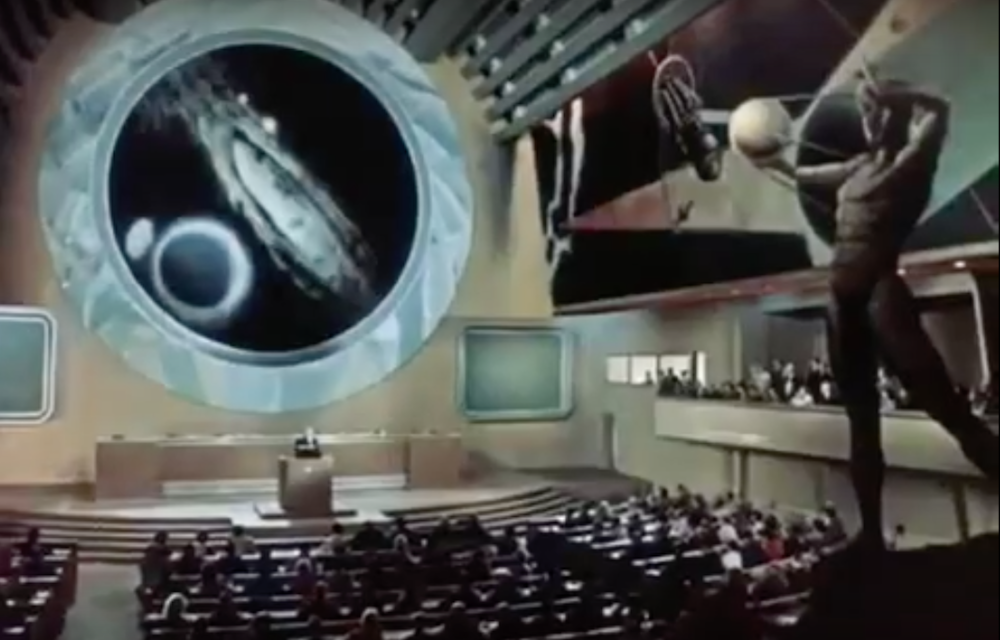From cassette cinemas to home-made joysticks: how new media revolutionised Poland behind the Iron Curtain
Focusing on the last years of the Polish People’s Republic, New Media Behind the Iron Curtain explores the cultural history of early technology in socialist Poland. Covering the adoption of recording equipment such as VCRs, microcomputers, and satellite television, the authors describe a period of technical experimentation as authorities’ attempts to control the incoming media failed to keep up with their ever more imaginative implementation.
Drawing on interviews with new media pioneers, the book describes how the technology was fashioned to gain access to western culture such as TV programmes, films, and video games, and utilised in response to Poles’ particular needs stemming from a marked lack of resources. As such, the authors argue that new media were a window to the prohibited outside world and a way for enterprise to thrive on the edges of a restrictive socialist society. In their adoption and related consumerism, a certain premonition of the end of communism can also be glimpsed. Because of this, new media’s diffusion during the last years of the PPR is an important, if overlooked, aspect of Poland’s history.
Computer room equipped with Mazovia computers, from the film Pan Kleks w kosmosie (Mr. Blot in Space, Krzysztof Gradowski, 1988). Image: Polish National Film Archive
The first owners of video recorders were private entrepreneurs
Importing recorded tapes of foreign TV programmes and films through illegal channels, private entrepreneurs soon made a profit. Employing translators and lectors, they created Polish versions of these illicitly acquired recordings and sold them on. But sometimes, these translations didn’t go according to plan. For example, when VCR entrepreneur Maciej Karwas commissioned eminent Polish writer Zbigniew Batko to translate a Monty Python film, he ended up with a translation that was far too wordy for the size of the subtitles. “Zbyszek said that they have such wonderful dialogue and clever puns, and he must translate it all,” Karwas recalled. Not surprisingly, the translation was never used.
“Cassette cinemas” became a thing
Unlike in the West, networks of videophiles were built not on the exchange of tapes but on the sharing of equipment, due to the prohibitive cost of video players for home use. In the 1980s, recordings were most often screened at so-called cassette cinemas, where large groups of people would squeeze into small rooms such as student halls and army barracks, and watch badly synchronised faded tapes on tiny black-and-white TVs. The appeal of these screenings over traditional cinema was their novelty. Viewers, writes New Media Behind the Iron Curtain co-author Piotr Sitarski, “ecstatically, experienced the material presence of the medium.”
A satirical drawing depicting how satellite television was installed in the Warsaw Ursynów estate before phone lines. Image: Pasmo magazine (1988)
Priests facilitated the screening of banned films
Young priests were often early users of new media, employing the emerging technology in catechism teaching, and encouraging discussion of the religious meanings of films screened at their parishes during the rise of cassette cinemas. But video screening technology also served another purpose. During communist rule, the Church offered a literal and metaphorical space of freedom from the regime. Not surprisingly then, priests facilitated video exhibition circuits with connections to the political opposition, often screening films that were banned by the authorities.
Computers were for communal use, but hobbyists went to extraordinary lengths to obtain their own
In Eastern Bloc countries, technology was to be used communally rather than individually. But computer enthusiasts defied the will of the state, going to great lengths to acquire machines for personal use. While some people bought computers on trips abroad or on the black market, others built their own. This, much like acquiring components, was not a straightforward endeavour. Given the unavailability of English-language publications on microcomputers, hobbyists had to rely on Russian translations. However, thanks to the Cold War technological race, Anglo-Saxon publications were brought to Moscow relatively quickly, and imported into Poland at pace.
Marcin Borkowski, an early computer enthusiast, during a 1975 computer showcase at the Palace of Culture and Science in Warsaw. Image: Marcin Borkowski’s private archive
The secret police believed computers were being used for counterintelligence but failed to realise their ideological potential
During the late 1980s, the Security Service became interested in the influx of computers from abroad, believing that western intelligence services were thus equipping their agents with a new means of communication. However, the operations undertaken by the Security Service mainly concerned uncovering computer use in workplaces that was contrary to their intended purpose, ignoring the machines’ potential as a tool for the reception and production of western cultural forms such as video games.
The state sanctioned DIY joysticks
Following the food shortages which came in the wake of martial law in the PPR, the state decided to shift some of its direct responsibility for the public’s food security to people themselves, breaking with the USSR belief that individual gardening was the legacy of a petit-bourgeois lifestyle. In a similar vein, the state sanctioned hobbyists who were creating solutions to constant material shortages and in response to the high price of services. And so, with 8-bit computer joysticks wearing out quickly, owners were permitted to build their own out of materials such as hydrogen peroxide bottles, parts of disassembled toys and wooden sticks.
Student Scientific and Cultural Movement (URNiK)'s interdisciplinary summer camp at the Garbaś Lake in 1987. Image: Andrzej Grossman’s private archive
Satellite television offered a new window to the West
By the early 80s, satellite sets had already appeared in the West, making it possible for Poles to directly receive space signals broadcast by telecommunication satellites, and to watch them without state mediation. In this way, individual reception of satellite TV was made possible long before TV broadcasters had officially decided to screen foreign TV programmes directly. Moreover, importing satellite TV equipment to Poland didn’t pose much of a problem: in the first half of the 80s no one, including customs officers, knew what the devices were really for. The biggest issue was that they were prohibitively expensive.
The authorities encouraged cable TV
A few years later, it became apparent that developing Poland’s own cable TV media infrastructure was impossible, as the state couldn’t afford it. And so, the government allowed private TV firms to sell satellite TV to housing cooperatives, with representatives from the estates choosing what would be broadcast to the whole community. This, they hoped, would prevent something they perceived as more threatening – individual viewers choosing what they wanted to watch directly from satellite television.
Zdzisław Żniniewicz, an early satellite dish pioneer, with his travelling satellite television in Warsaw. Image: Ekran magazine, 1987
Socialist Poland became an exporter of satellite dishes
With a satellite TV journey that began with illegally imported antennae from Sweden, socialist Poland seemingly came full circle when state supported businesses conferred the title of “research and development units” ended up making satellite dishes exported to Sweden. But Swedes went to great lengths to conceal their origin. “They thought it was all bears [in Poland], not satellite dishes,” commented Adolf Bogacki, who was one of the first Polish satellite dish manufacturers.
New Media Behind the Iron Curtain is available from the University of Łódź, and for pre-order on Amazon and Columbia University Press.


